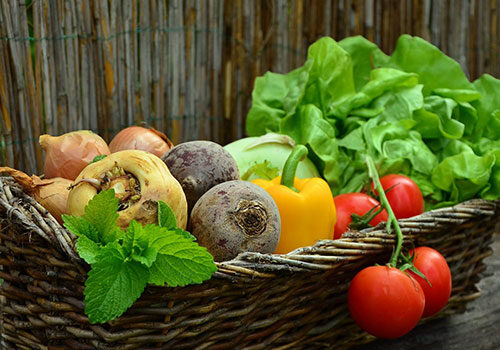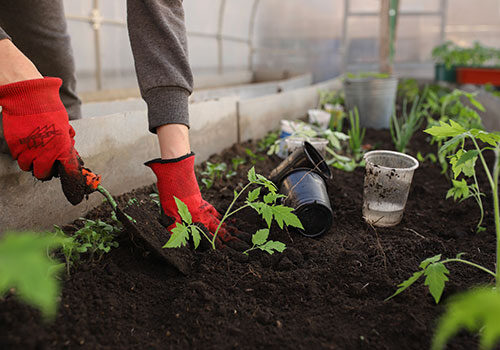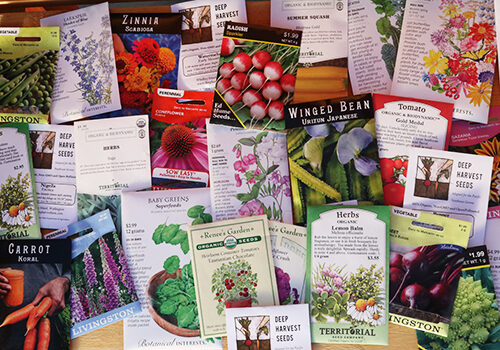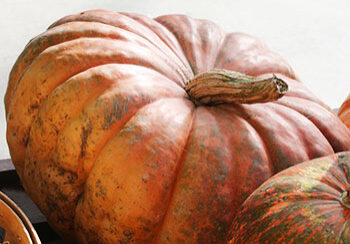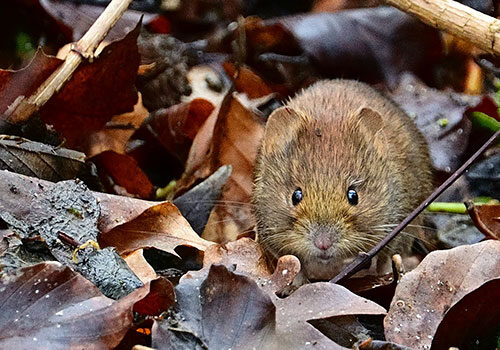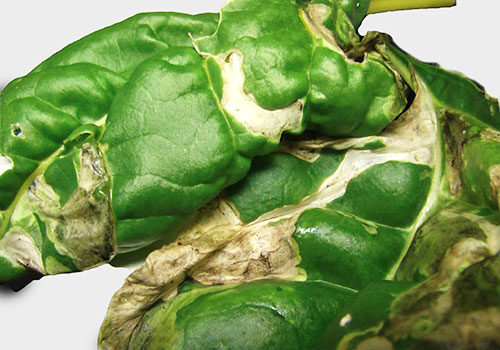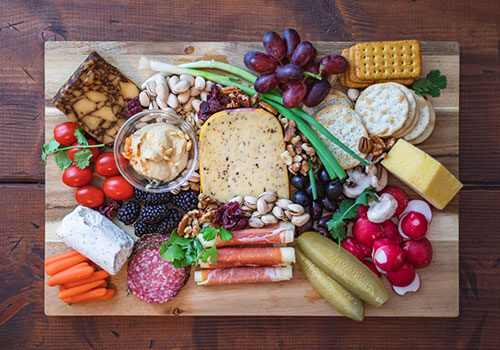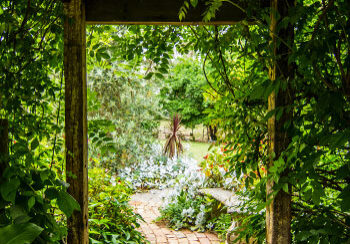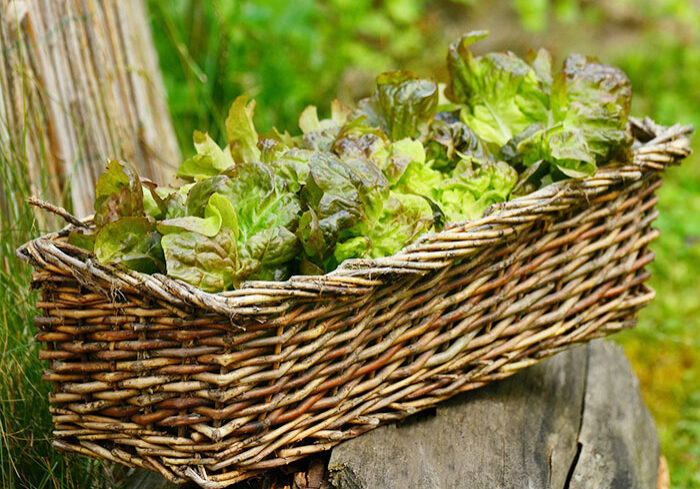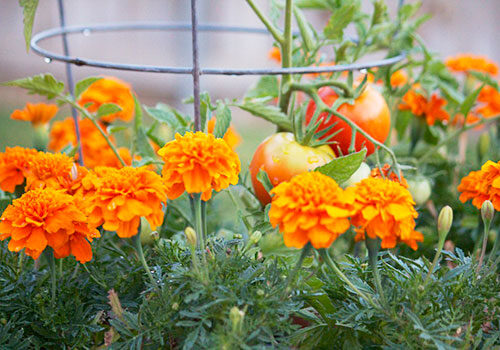FRUIT, VEGETABLES & HERBS
Explore our huge edibles selection, specially chosen to thrive in the PNW. Fresh shipments arrive weekly and change with the seasons.
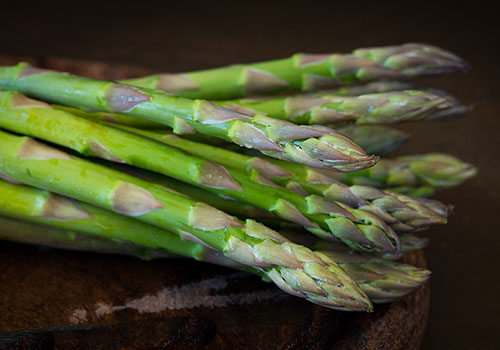
PERENNIAL VEGETABLES
Come in early March for the best selection of bare root asparagus, rhubarb, horseradish and more. April and beyond, look for rhubarb, artichoke, and tree collard starts.
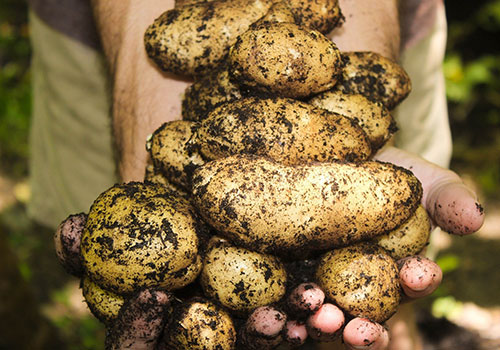
POTATOES & ONIONS
Potatoes should be planted in early spring (Mar-May), so be sure to check out our seed potato selection before they sell out! Walla Walla onion sets are available for most of the spring.
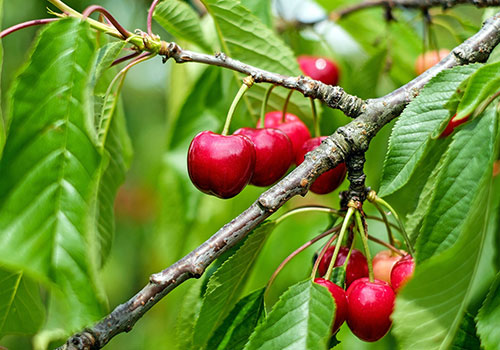
FRUIT & NUT TREES
Our big shipments of fruit trees arrive late Jan. - mid-Feb. with smaller ones in the early fall. Come in early for our best selection and shop apples, cherries, persimmon, hazelnuts and more.
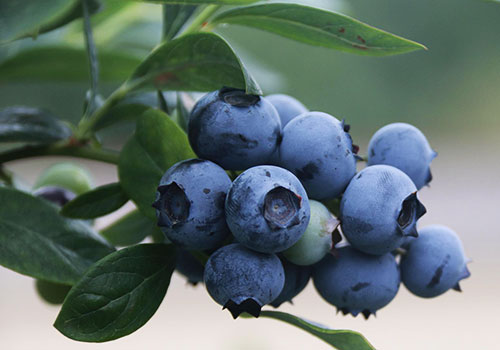
BERRIES & SMALL FRUITS
Look for shipments of raspberries, blueberries, blackberries and more. Best selection in Late February. We also stock grapes, figs, kiwis, nuts, and exotics such as goji. Care Sheets & Lists below:
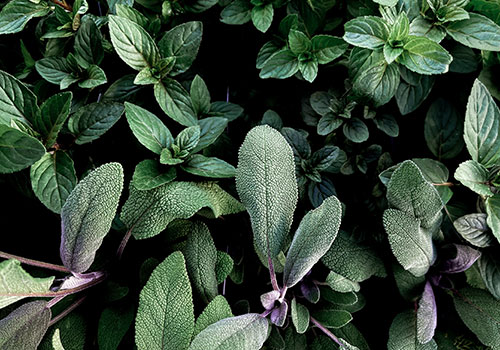
HERBS
From March - July look for our best selection of herbs, including shiso, parsley, lemongrass, tarragon, oregano and more. Hardy herbs like rosemary, bay, and thyme available Feb. - Oct.
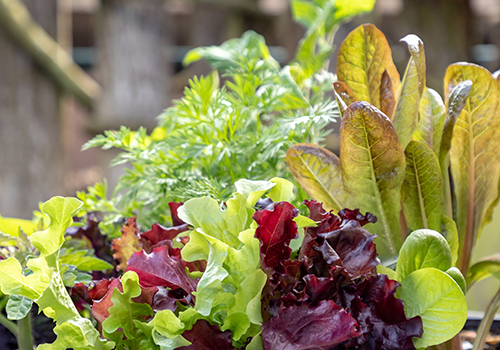
COOL SEASON VEGGIES
Late winter - spring is the first planting season for vegetables that like it cool. Lettuce, peas, spinach, kale, greens of all kinds, cabbage family, beets and radishes are all happy to be planted now.
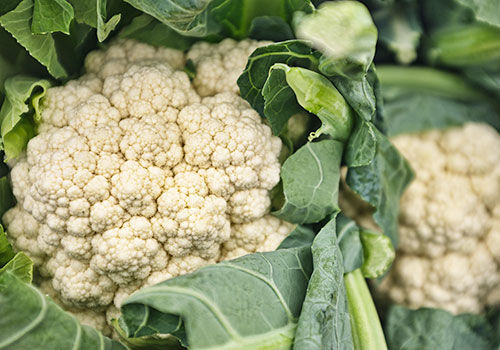
FALL/WINTER HARVEST VEGGIES
In late July/August we can plant a 2nd round of cool-season veggies for fall harvest and overwintering. Look for lots of greens, onions, peas and beets to reappear this time of year.
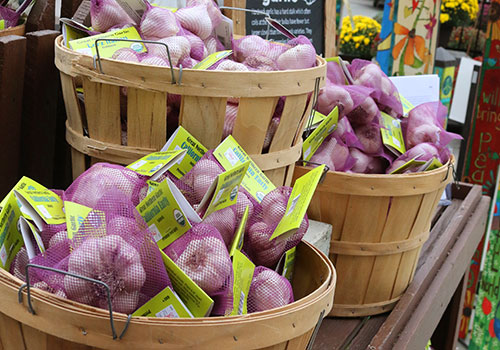
GARLIC
Heirloom, organic, softneck, hardneck and elephant garlic bulbs usually arrive in mid-late September, so save some room for those as you plant your overwintering veggies!
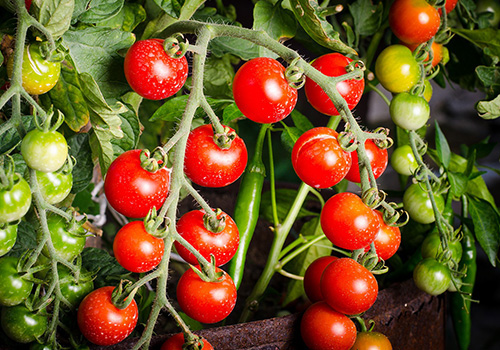
TOMATOES
Sky Nursery is out of tomatoes for the 2023 season! Other vegetable starts are still available.
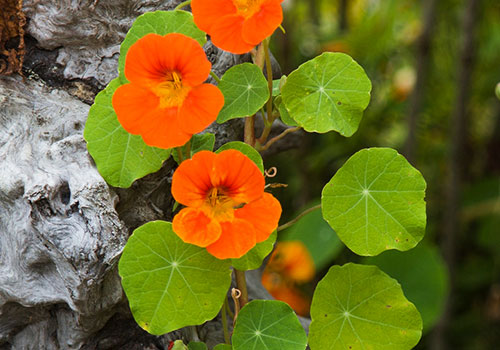
EDIBLE FLOWERS
If you love seasonal edible flowers, we usually receive our best selection of scented geraniums, nasturtiums, and marigolds in late Spring. Visit our annual page for ornamental flowers.
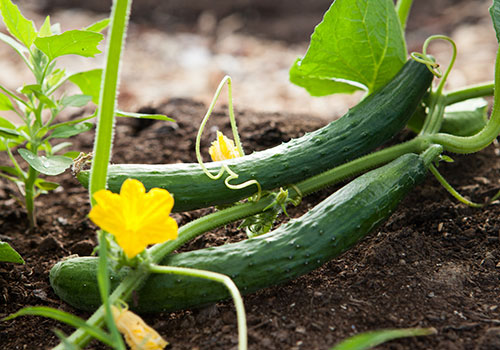
HOT SEASON VEGGIES
Pepper, cucumber, green bean, eggplant, summer and winter squash, tomatillo, melon and more starts arrive in early-mid May, as the weather warms and usually continue through June.
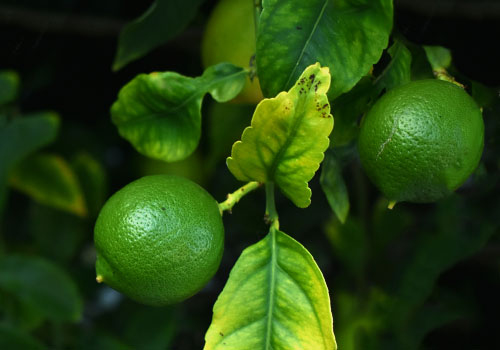
CITRUS TREES
We regularly stock a wide variety of limes, lemons, oranges, kumquats & more, even in the middle of winter! Be sure to speak to our houseplant staff for tips and tricks to help you succeed!
On the Blog
The Dance of the Veggies P2: Crop Rotation
Many gardeners have heard that crop rotation is a good idea, but there’s a lot of confusion out there over how to make it happen. Especially when you’re working with a city-sized space or a container garden, a lot of advice you’ll find out there can sound impossible to follow. But, once you understand the…
Read MoreThe Dance of the Veggies P1: Succession Planting
What is Succession Planting? Simply put, succession planting means growing more than one crop, or growing several rounds of the same crop, in the same space within the same year. Does that sound a little intimidating? Don’t worry, it’s not as complex as you might think! If you want to make the most of your…
Read MoreSeeds at Sky: Local, Organic, Sustainable & Beyond
It’s time to think about seeds! Here in the Pacific Northwest, many vegetable and summer flower seeds can be sown indoors starting in February to get a jump start on the season. The hardiest spring veggies can even be sown right into the ground by early March. As you begin to consult seed planting charts…
Read MorePumpkin Passion: Delicious Recipes for Sky Squash
Every year in October, a good part of the Sky greenhouse becomes an all out festive fall pumpkin patch! We source organic and sustainably grown pumpkins, gourds, and squash from just a few special local growers in the Pacific Northwest. Whether you’re looking for the perfect jack-o-lantern to carve before all hallows eve, or a…
Read MorePest Damage ID Part 3: Who’s destroying my garden?
Creepy crawlies may come to mind first when we think about garden pests, but birds and mammals can sometimes cause us even more trouble. Damage from smaller critters might look like holes or discoloration. But when it comes to uprooted plants, heavily nibbled veggies or flowers, seeds snapped right up out of the ground, or…
Read MorePest Damage ID Part 2: Who’s Discoloring My Leaves?
Pest damage isn’t always as obvious as holes in your leaves. In our last pest damage ID post, we covered the most common insect pests that chew or rasp away at plant leaves. This time, we’re taking a look at some more subtle culprits: those that suck the juices right out of your plants like…
Read MoreCelebrate Summer: Inspiration for Garden Gatherings
A garden party of any size can be a wonderful way to celebrate the season of abundance. Many of us are yearning for a little jubilation now more than ever, and a garden is the perfect place to make those memories. At the same time, we may be keeping our gatherings smaller, and looking for…
Read MoreThe Garden Walk: Daily Checklist for a Healthy Garden
I take a walk through my garden every day. I can usually be found out there first thing in the morning on my days off, probably in pajamas, while my morning coffee brews inside. If I have to rush to work in the morning, it might wait until I get home. In that case, I…
Read MoreHarvest Season is Every Season: Don’t Miss These Early Bonus Crops
Most of us have been trained to think in terms of linear systems, and new vegetable gardeners often start out trying to garden in a straight line: plant in the spring, water through the summer, harvest in the fall, wait out the winter, then purchase new seeds or seedlings and start over. There’s a lot…
Read MoreCompanion Planting
We get a lot of questions about companion planting at Sky. Many gardeners hope for a straightforward list of compatible plants to make it easy to intercrop their garden beds. But ultimately, charts and lists might be a little too simplistic for the beautifully complex world of plants. Instead, we like to think about companion…
Read More
Our selection is always changing, with fresh shipments arriving throughout the week. Please give us a call to check availability.
FREQUENTLY ASKED QUESTIONS
We carry certified organic vegetable and herb starts from Rent’s Due Ranch and Westwind Gardens. Many of our growers have not opted for certification, but still use sustainable practices that often go beyond organic standards. All vegetables and herbs here at Sky are local, sustainably grown, and GMO-free. We trust our growers, and we’ll be happy to answer any questions you might have about exactly how our starts were grown.
We do our best to carry an abundant selection of starts in their proper seasons. We usually get our first deliveries of a given variety 1-2 weeks before its ideal planting window, and we continue receiving fresh weekly shipments as long as we believe there’s ample time to plant for a quality harvest. Check our seed planting guide to get an idea of when you can expect to see your favorites. Keep an eye on our Facebook and Instagram pages for new arrivals and last-calls, or call to check weekly availability.
We recommend starting with what you like to eat! If you look forward to eating your home-grown veggies, you’ll have fun growing them. Look for some basic articles or videos on growing your top three or four favorite veggies, and go from there. We’d say don’t take on more than one 4’x8’ bed, or a few large pots, worth of space to manage your first time around. You can always add more veggies and more growing space to your repertoire.
Choose a high-quality organic, granulated fertilizer. Fertilizers labeled “All-Purpose” or “Vegetable and Herb” will both work well, and we carry several great brands. Soil provides the structure your plants need, but fertilizer is their food. Follow the instructions on the package to add the correct amount to your bed or container. Optionally, you can supplement with a liquid organic fertilizer such as fish emulsion. Most gardeners also need to add a small amount of lime to their beds each year to keep the pH neutral.
Open pollinated varieties will “come true from seed.” This means that as they are only pollinated by the same variety, any seeds saved from them will grow into a very similar plant. Although there’s no strict definition of “heirloom,” all heirloom varieties are open pollinated, and most have been around for at least 50 years. Hybrid varieties are crosses between two or more open pollinated varieties. Hybrids are not GMOs. You can easily make a hybrid in your own garden, even by accident. Because they have the benefit of greater genetic diversity, hybrids are often more resilient and vigorous than open-pollinated varieties. However, they won’t “come true” from seed. If you save seeds from a hybrid, there’s no knowing what combination of the parents’ traits will show up in the new plant.
You can plant fruit trees anytime the ground isn’t frozen, but late winter or early spring is an ideal and traditional time. If you plant them while they’re still dormant, they’ll have a chance to settle in before growing their spring leaves. We receive most of our fruit trees for the year in late January, so you’ll find our best selection in February.
Many berry plants will make plenty of leaves in part-shade, but unfortunately there’s just no substitute for full sun if you want to harvest lots of ripe, well-developed fruits or berries. Producing fruit takes a lot of energy, and plants are solar-powered. Give your fruit trees and berry plants as much sun as you possibly can. If sun is just not an option, there are still other edible plants you can grow in part shade.
Many fruit and berry varieties require cross-pollination from a different variety. You could always cross your fingers and hope a neighbor has an appropriate mate for your tree, but it’s best to grow multiple varieties yourself. If you have limited space, combination fruit trees are a great option. They have multiple varieties grafted onto the same root-stock, so you have all the cross pollination you need in one tree. There are also self-fertile varieties of blueberries, but they will still perform better if you plant more than one variety.
You may have heard that blueberries need acidic soil, but use caution before trying to change your soil pH. Most Pacific Northwest have naturally acidic soil that is just about perfect for blueberries as it is. We typically have to battle this natural acidity when we’re growing plants that prefer a neutral pH, such as most vegetables, by adding lime every year. But we can take a break and enjoy the perfect natural match when we grow acid-lovers like blueberries.
There’s no one size fits all answer, which is why we carry so many options! But fruit and berry plants represent a long-term investment, so you’ll want to do your research and make the best choice for you. Keep in mind how much full-sun space you have, how much production you’re hoping for, and your flavor preferences. We carry a selection of container berry varieties for those who want to grow in pots!

